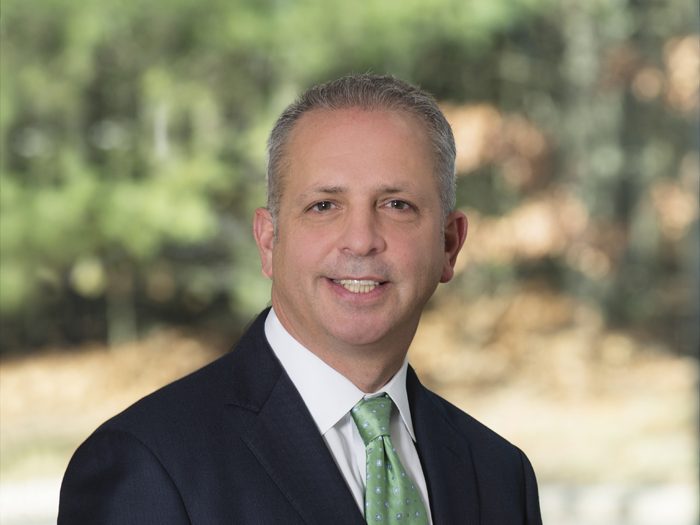Social Inflation Threatens Claims Outcomes, and Other Insights Shared by a Specialty Exec

The specialty market is booming. According to the Surplus Lines Stamping Office of Texas, E&S premiums recorded by 15 managing services offices in mid-2018 were up $1.4 billion from the previous year — a 9.4 percent bump. Over the past seven years, premiums have jumped 67 percent.
With its acquisition of specialty insurer Ironshore in the Spring of 2017, Liberty Mutual Insurance has taken advantage of this growing market. We sat down with president of Ironshore U.S., Matt Dolan, to talk about how the merger boosts his company’s competitive advantage in an increasingly crowded marketplace, as well as other trends and challenges facing the industry in 2019.
R&I: The specialty market is highly competitive right now. What makes Ironshore stand out?
Matt Dolan: It is an exceptionally competitive marketplace. At Ironshore, we feel like we have a few things that help us compete effectively.
First and foremost, I would extol the expertise and capabilities of our people. We have a team of recognized industry experts with a tremendous amount of cumulative underwriting experience and insight. They’ve managed through previous underwriting cycles and navigated through environmental changes. I think that level of experience is fundamental to specialization.
Data lends itself to information, and information lends itself to judgment.
Second, I think our level of engagement with our distribution partners distinguishes us. We approach our producer and agent partners as problem-solvers with the ability to innovate, and that ultimately affords us a high place of relevance within the distribution network. It should, if we execute accordingly, allow us to out-select our competitors.
Third, quite simply, is our product portfolio. Our suite of solutions is a key differentiator.
R&I: Can you talk more about how you engage with your distributors? How do you empower them to do a better job of finding solutions for insureds?
MD: We’re very much committed to the idea that we are not just risk transfer solution providers, but content providers. We capture a lot of data across the industry segments we’re involved in, whether that’s health care or financial institutions or environmental liability. Data lends itself to information, and information lends itself to judgment.
So when brokers come to us with issues they’re trying to solve, they see us as a source of expertise in their areas. It then really becomes about allowing the broker to view the transaction through the same information lens that we see the market through. What we’re able to do is show brokers a view of the entire market.
That allows them to go back to their clients with an enriched perspective.
R&I: The acquisition by Liberty Mutual has given Ironshore access to even more lines of business than it had traditionally been involved in. How does your team of specialty underwriters benefit from the partnership with Liberty’s pool of standard commercial line underwriters?
MD: It starts with understanding the cumulative product suite that stretches across the Ironshore and Liberty organization. We can now offer a vast array of products for evolving and increasingly sophisticated insureds.
The catalyst behind the combination of our two organizations is the desire to provide whole-account, holistic solutions. For instance, for a health care organization we can do everything from the hospital professional liability, general liability, workers’ comp, auto liability, property, D&O, and cyber. There are very few conventional risk transfer needs that we can’t accommodate.
R&I: Given the rapid growth in specialty insurance, how are you using technology to keep pace?
MD: We’re using technology to facilitate our ability to respond and react to our customers’ buying needs.
Using technology to ensure the right kind of underwriting response is essentially about informed analytics and the ability to capture vast amounts of information across our risk portfolios. That data informs how we respond to a particular account or a particular risk.
Technology enables us to better understand our existing relationships with our insureds and identify if there are other products or solutions we could be bringing to the table. Technology, combined with our product capabilities, has changed our approach from being reactive to proactive and focused on problem-solving. In addition to providing better customer service, technology also enables faster speed to market.
R&I: How do you maintain underwriting discipline amid rapid evolution of both risks your clients are facing and technological capabilities?
MD: Using technology to ensure the right kind of underwriting response is essentially about informed analytics and the ability to capture vast amounts of information across our risk portfolios. That data informs how we respond to a particular account or a particular risk.
That information can include things like rate online, or geographical concentrations, or relative risk evaluation. By that I mean, how does this risk compare on a multi-variant analysis to a lot of the other risks in our existing portfolio? Are we pricing it in accordance with that relative risk measurement?
R&I: What are the risks of technological progress for insurers?
MD: Technology is the fundamental catalyst of progress in today’s environment, but progress is not always linear. While technology solves many of today’s problems, along the way it creates new, unprecedented risks.
So one really has to think about the journey of progress. The destination is a better place, but along the way it is fundamentally disruptive. That’s a challenge for underwriters because it forces the realization that history is not altogether predictive of the present or the future, and historical data is what we rely on to price risk.
R&I: What are some other underwriting challenges on your radar for 2019?
MD: The issue of social inflation is a big concern for liability underwriters. Broadly speaking, social inflation refers to the views, opinions and reactions of people as they’re interfacing with institutions. For insurers specifically, it goes to the sensibility of juries. The acute perception of economic disparity in the U.S. and a deep-seated institutional distrust and the perception of the value of an injury… all of that translates into the expected value of claim outcomes.
So one really has to think about the journey of progress. The destination is a better place, but along the way it is fundamentally disruptive. That’s a challenge for underwriters because it forces the realization that history is not altogether predictive of the present or the future, and historical data is what we rely on to price risk.
The challenge for liability underwriters, actuaries and others trying to quantify its impact, is that social inflation typically doesn’t follow a predictable linear trajectory. It can level shift on you, and it can create a new bar. When a verdict is reached that is unprecedented or extremely high, that reestablishes a value for the next case and potentially your entire claim inventory. Then you’re in a position of having a risk portfolio that is potentially sub-optimally positioned or priced.
R&I: Talent recruitment and retention is also undoubtedly an ongoing issue for the industry. When you recruit new hires, what skills or characteristics are you looking for?
MD: One would be an insatiable curiosity — constantly trying to figure out why things are happening and what the drivers are, and understanding both the information that is presented and the subtext that isn’t as obvious.
Obviously, a strong work ethic is fundamental. And I think now more than ever, adaptability is really critical because business environments are changing and the speed at which business is transacted is accelerating. I think the ability to manage through change — both in the risks you’re evaluating and your own work environment — is critical. We seek talented inclusive leaders that challenge the status quo, listen to the great innovative ideas of the team and understand that a diverse team can provide the most creative solutions.
R&I: Looking ahead to 2019, what should insureds expect from your division in terms of new products or solutions?
MD: I think fundamentally, what we want our insureds to know is that we will not come to the market with a preordained product solution. The bigger balance sheet and a broader product suite that is a component of our joining with Liberty Mutual will allow us to think more broadly about how we can most effectively solve risk management needs.
Insureds can expect us to evolve with them as they grow and their risks become more sophisticated. They won’t outgrow us. Their exposures won’t become too complex. We’re global in our capabilities, our reach and our appetite. We will also be more innovative than ever and looking to come up with tailored solutions to our clients’ unique needs. &










